Sercomm 0NV00 802.11g Wireless mini-PCI LAN Card User Manual Part 1
Sercomm Corporation 802.11g Wireless mini-PCI LAN Card Part 1
Sercomm >
Contents
- 1. OEM Installation Manual
- 2. Part 1
- 3. Part 2
Part 1
802.11g
Wireless mini PCI Card
User’s Manual
P/N: 9560NV0001
REGULATORY STATEMENTS
FCC Certification
The United States Federal Communication Commission (FCC) and the
Canadian Department of Communications have established certain rules
governing the use of electronic equipment.
Part15, Class B
This device complies with Part 15 of FCC rules. Operation is subject to the
following two conditions:
1) This device may not cause harmful interface, and
2) This device must accept any interface received, including interface that may
cause undesired operation. This equipment has been tested and found to
comply with the limits for a Class B digital device, pursuant to Part 15 of the
FCC Rules. These limits are designed to provide reasonable protection
against harmful interference in a residential installation. This equipment
generates, uses and can radiate radio frequency energy, and if not installed
and used in accordance with the instructions, may cause harmful interference
to radio communications. However, there is no guarantee that interference
will not occur in a particular installation. If this equipment does cause
harmful interference to radio or television reception, which can be
determined by turning off and on, the user is encouraged to try to correct the
interference by one or more of the following measures:
Reorient or relocate the receiving antenna.
Increase the distance between the equipment and receiver.
Connect the equipment into an outlet on a circuit different from that to
which the receiver is connected.
CAUTION:
1) To comply with FCC RF exposure compliance requirements, a separation
distance of at least 20 cm must be maintained between the antenna of this
device and all persons.
2) This transmitter must not be co-located or operating in conjunction with
any other antenna or transmitter.
Channel
The Wireless Channel sets the radio frequency used for communication.
•Access Points use a fixed Channel. You can select the Channel used. This allows
you to choose a Channel which provides the least interference and best performance.
In the USA and Canada, 11 channel are available. If using multiple Access Points,
it is better if adjacent Access Points use different Channels to reduce interference.
• In "Infrastructure" mode, Wireless Stations normally scan all Channels, looking for an
Access Point. If more than one Access Point can be used, the one with the strongest
signal is used. (This can only happen within an ESS.)
• If using "Ad-hoc" mode (no Access Point), all Wireless stations should be set to use the
same Channel. However, most Wireless stations will still scan all Channels to see if there
is an existing "Ad-hoc" group they can join.
Table of Contents
INTRODUCTION...................................................................................... 1
WIRELESS NETWORK OPTIONS ................................................................. 1
The Peer-to-Peer Network............................................................ 1
The Access Point Network ........................................................... 2
WIRELESS PCI CARD................................................................................ 2
Power Indicator: (Orange LED) ................................................... 2
Act Indicator: (Green LED) ......................................................... 3
INSTALLATION ....................................................................................... 4
INSTALL THE DRIVER & UTILITY.............................................................. 4
INSTALL THE DEVICE................................................................................. 7
Note for Windows 98 users:......................................................... 7
Note for Windows 2000 users:..................................................... 8
Note for Windows XP users:........................................................ 8
Verify Device Installation ............................................................ 9
NETWORK CONNECTION .................................................................. 11
IN WINDOWS 98/ME............................................................................... 11
IN WINDOWS 2000/XP............................................................................ 14
CONFIGURATION................................................................................. 17
ACCESSING THE CONFIGURATION UTILITY ............................................. 17
MAIN TAB............................................................................................... 18
ADVANCED TAB ..................................................................................... 22
PRIVACY TAB ......................................................................................... 22
STATISTICS TAB...................................................................................... 29
ABOUT TAB ............................................................................................ 30
UNINSTALLATION ............................................................................... 31
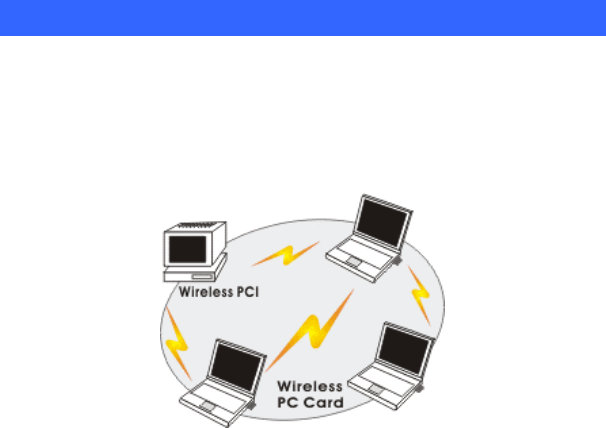
INTRODUCTION
The 802.11g Wireless LAN Card is a device that allows you connect
your computer to a wireless local area network (LAN). A wireless LAN
allows your system to use wireless Radio Frequency (RF) technology to
transmit and receive data without having to physically attach to the
network. The Wireless protocols that come with this product ensure data
security and isolation from interference generated by other radio
frequencies.
This card also allows you to take full advantage of your computer’s
mobility with access to real-time information and online services anytime
and anywhere. In addition, this device eliminates the bother of pulling
cable through walls and under furniture. It even allows you to place your
system in locations where cabling is impossible. Modifying and
augmenting networks has never been so easy.
Wireless Network Options
The Peer-to-Peer Network
This network installation lets you set a small wireless workgroup easily
and quickly. Equipped with wireless PC Cards or wireless PCI, you can
share files and printers between each PC and laptop.
-1 -
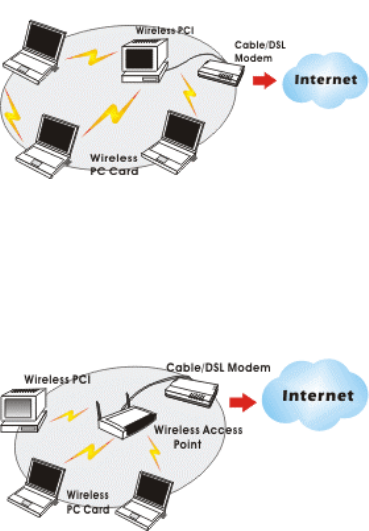
You can also use one computer as an Internet Server to connect to a wired
global network and share files and information with other computers via a
wireless LAN.
The Access Point Network
The network installation allows you to share files, printers, and Internet
access much more conveniently. With Wireless LAN Cards, you can
connect wireless LAN to a wired global network via an Access Point.
-2 -
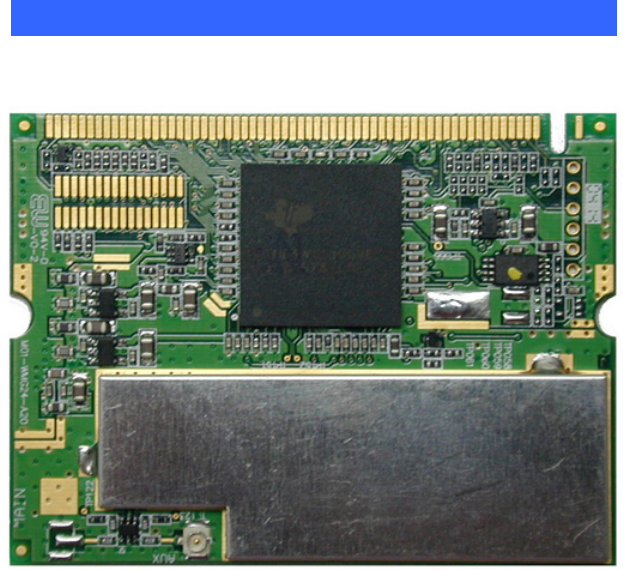
-3 -
Wireless PCI Card

INSTALLATION
”
Caution: Do not insert the Wireless LAN Card into your computer
until the procedures in “Install the Driver & Utility has been
performed.
Install the Driver & Utility
3. Exit all Windows programs. Insert the CD-ROM into the CD-ROM
drive of your computer.
If the CD-ROM is not launched automatically, go to your CD-ROM
drive (e.g. drive D) and double-click on Setup.exe.
4. The main screen of the CD-ROM opens. Click Install Driver &
Utility to start the installation.
-4 -
5. When the Welcome screen appears, click Next to continue.
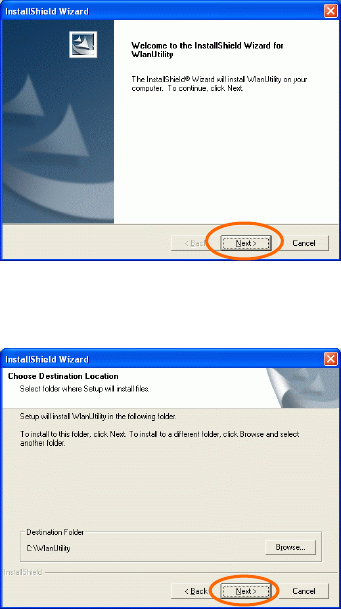
6. The Choose Destination Location screen will show you the default
destination chosen by the utility. Click Next to continue.
7. Follow the instruction to select the program folder. Click Next to
continue.
-5 -
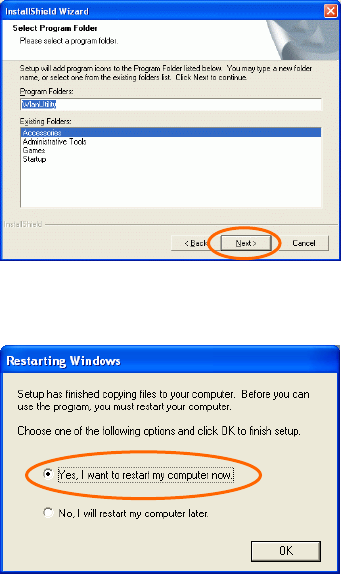
8. Select OK to Yes, I want to restart my computer now and click
complete the installation
-6 -
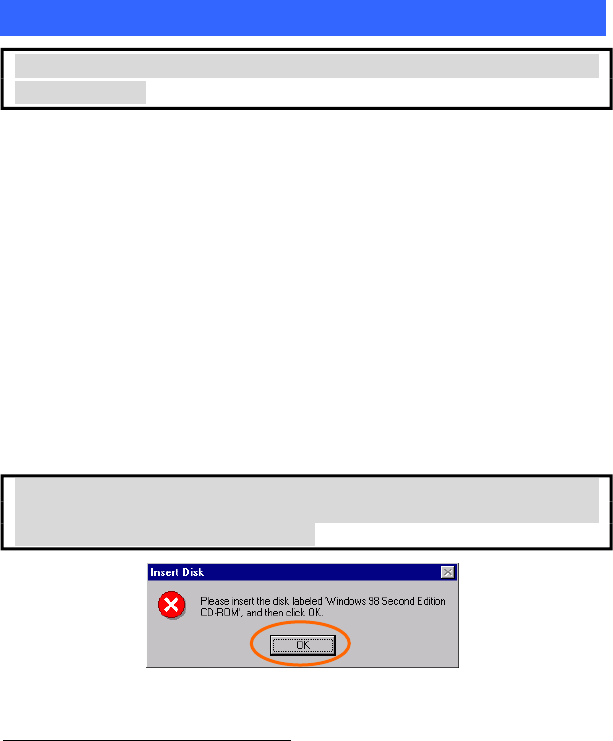
Install the device1
” hasNote: Make sure the procedures in “Install the Driver & Utility
been performed.
1. If you are using the Wireless PCI Card, before installing the
device, make sure the computer is turned off. Remove the
expansion slot cover from the computer.
2. Carefully slide the Wireless PCI Card into the
PCI slot. Push evenly and slowly and ensure it is
properly seated. For Wireless PCI Card, you may have to use the
mounting screw to have the card screwed securely in place.
3. After the device has been connected to your computer, turn on
your computer. Windows will detect the new hardware and then
automatically copy all of the files needed for networking.
Recover your expansion slot cover if you are using the Wireless
PCI Card.
Note for Windows 98 users:
Before installation of the device, make sure you have your operating
system CD-ROM at hand. You may be asked to insert the OS CD-ROM
in order to download specific drivers.
If you are using the Wireless PCI Card, the product descriptions shown on the screen will
differ from the illustrations shown in this document. Please discard the discrepancy and
follow the installation procedures to continue anyway.
-7 -
1
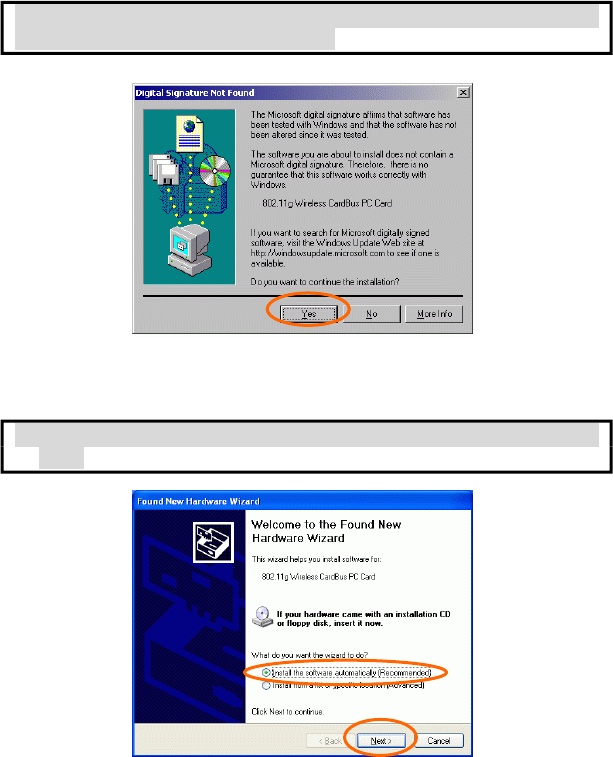
Note for Windows 2000 users:
During
1. Select
the installation, when the “Digital Signature Not Found”
screen appears, click “Yes” to continue.
Note for Windows XP users:
Install the software automatically (Recommended) and click
Next.
-8 -
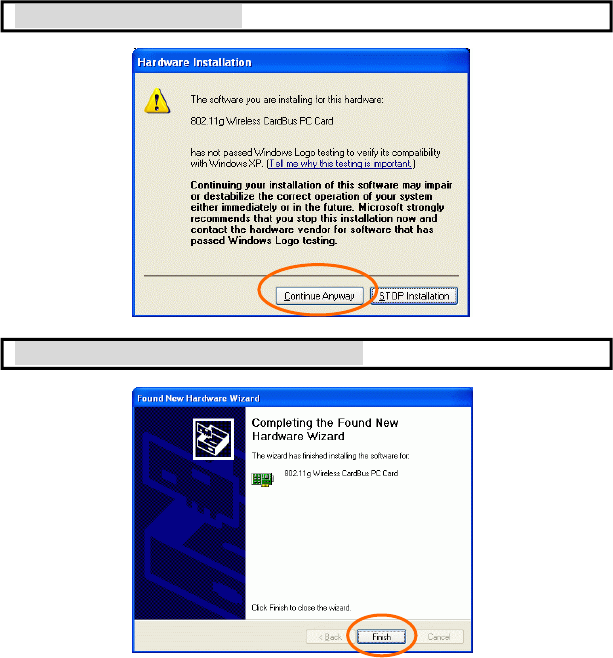
Finish
3. Click Continue Anyway.
4. Click to complete the installation.
Verify Device Installation
To verify that the device has been properly installed in your computer and
is enabled, go to Start Settings Control Panel System (
Hardware) Device Manager. Expand the Network adapters item. If
-9 -
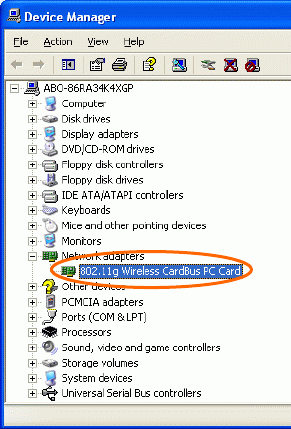
the 802.11g Wireless PCI/CardBus PC Card is listed, it means that your
device is properly installed and enabled.
-10 -
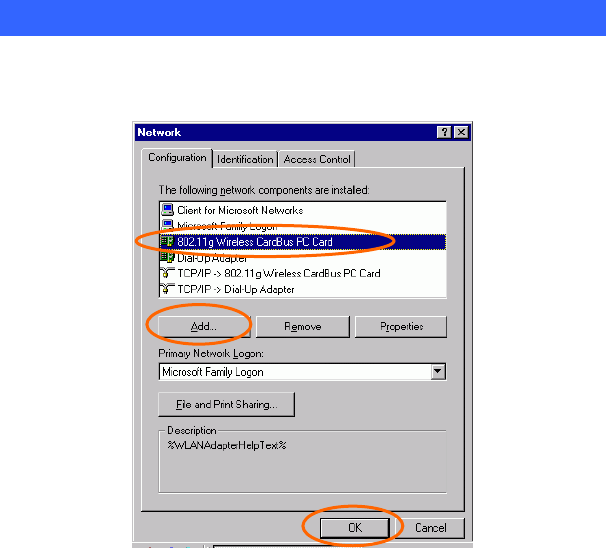
NETWORK CONNECTION
Once the driver has been installed, you will need to make adjustments to
your network settings.
In Windows 98/ME
1. Go to Start Settings Control Panel Network.
2. Make sure that you have all the following components installed.
802.11g Wireless PCI / CardBus PC Card
IPX/SPX-compatible Protocol
NetBEUI
TCP/IP
-11 -
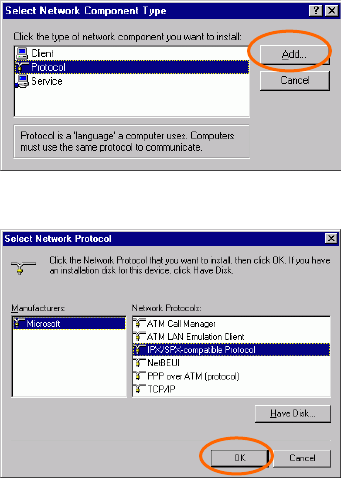
If any components are missing, click on the Add button to install them.
All of the protocols and clients required (listed above) are provided by
Microsoft.
3. Next, highlight the specific network component you need, click Add.
4.
add. Click OK.
Highlight Microsoft, and then double click on the item you want to
After returning to the Network screen, you can make your computer is
visible on the network by enabling the File and Print Sharing.
5. Click the Identification tab. Enter a name that is unique on the
network. Type the name of your workgroup, which should be the
same name used by all of the other PCs on the network.
-12 -
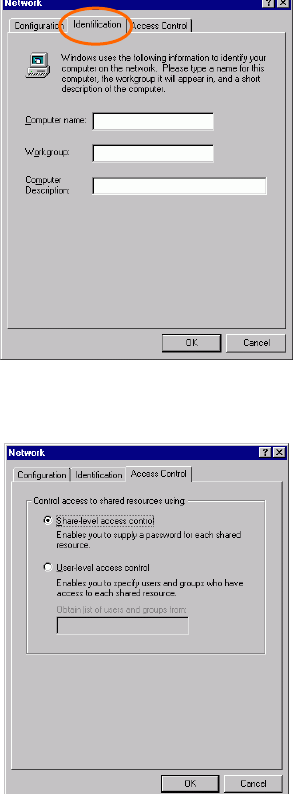
6. Click the Access Control tab. Make sure that “Share-level access
control” is selected. If connecting to a Netware server, share level
can be set to “User-level access control.”
-13 -
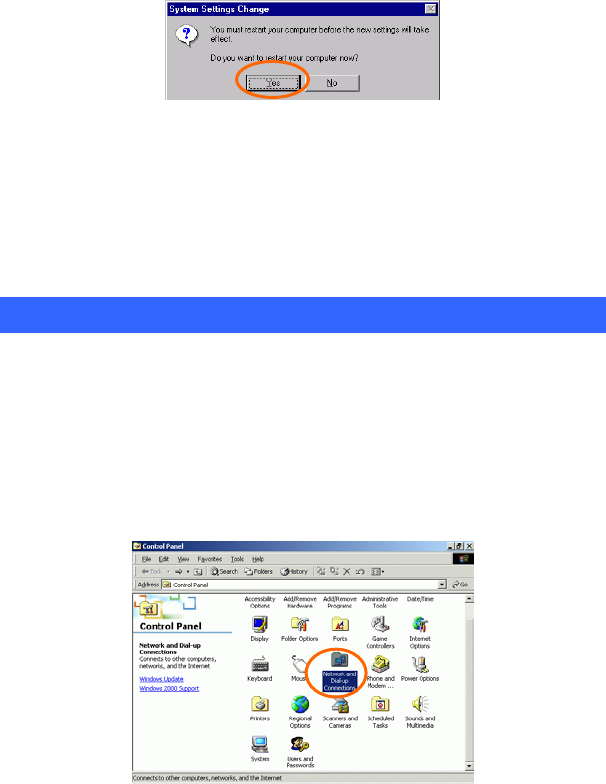
7. When finished, restart your computer to activate the new device.
8.
OK. Cancel
1. )
Settings
.
)
Wireless
.
Once the computer has been rebooted, a Logon window will appear
and will require you to enter a username and password. Enter a
username and password and click Do not click the
button, or you won’t be able to log onto the network.
9. Double-click the Network Neighborhood icon on the windows
desktop, and you should see the names of the other PCs on the
network.
In Windows 2000/XP
(In Windows 2000
Go to Start Control Panel Network and Dial-up
Connections Local Area Connection Properties
(In Windows XP
Go to Start Control Panel Network Connections
Network Connection Enabled 802.11g Wireless PCI/CardBus PC
Card Properties
-14 -
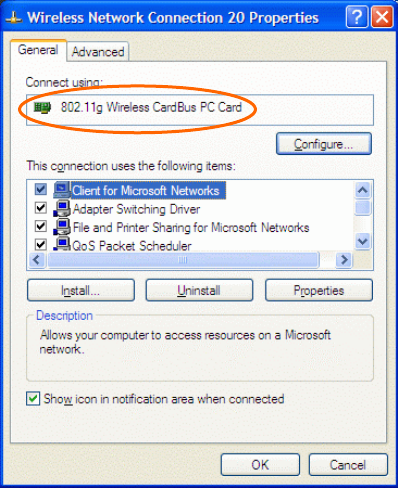
2. Make sure that you have all the following components installed.
Client for Microsoft Networks
NWLink NetBIOS
NWLink IPX/SPX/NetBIOS Compatible Transport Protocol
Internet Protocol (TCP/IP)
If any components are missing, click on the Install… button to select
the Client/Service/Protocol required.
3. After selecting the component you need, click Add… to install.
-15 -
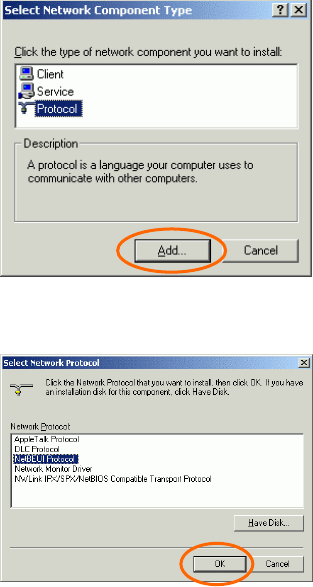
4. Select the network protocol you wish to add and click OK. This will
return you to the Local Area Connections Properties window.
5. To allow your computer to be visible on the network, make sure you
have checked off the File and Printer Sharing for Microsoft
Networks.
6. When finished, you must restart your computer to complete the
installation.
-16 -